Why Australia's presence in Afghanistan is untenable

An Australian lawyer criticises Australia's participation in war in Afghanistan. Australia's participation in the Afghan war has helped bring world Opium production to record levels, with Afghanistan leading the way. The justification for this war was given in 2001, and remains the justification for the war, which is set to become Australia's longest war, nearly 10 years later. This justification has never been scrutinised by Australia's mainstream newsmedia nor what passes for Australia's 'alternative' or 'far left' media. In this article, that case for war is comprehensively examined.

By James O'Neill*
See also: My submission to the Human Rights Consultation on National Security of 7 Sep 09 by James Sinnamon. Submission is on an 8.2K pdf file and is linked to from the National Security and Terrorism Public Submissions page.
Contents: Introduction, A Brief History, Carter and Brzezinski, Oil and Gas, The Legality of the Afghanistan War, (What is the Real Reason?: 1. Oil and Gas, 2. Geopolitical Ambitions, 3. Drugs), Conclusion, Footnotes.
Article originally published as PDF (180K) on journalof911studies.com.
Introduction
On 1 December 2009 US president Barack Obama announced in a speech to cadets at the West Point Military Academy that he was authorizing the sending of 30,000 more troops to Afghanistan. In justifying the "surge" in troops, Obama said, inter alia1
1. "I am convinced that our security is at stake in Afghanistan and Pakistan. This is the epicenter of the violent extremism practiced by al Qaeda. It is from here that we were attacked on 9/11.
2. It is important to recall why America and our allies were compelled to fight a war in Afghanistan in the first place. We did not ask for this fight. On September 11 2001, 19 men hijacked four airplanes and used them to murder nearly 3000 people."
Speaking from Washington on 1 December 2009 the Australian Prime Minister Kevin Rudd spoke in support of the US President's plans. Australia, he said, "takes its alliance with the US very seriously. That's why we have been with America for a long time in Afghanistan and why we will be with America for the long haul."2
Rudd was reflecting the bi-partisan approach adopted by the Labour party to the policies first advanced by the Liberal-National coalition. In a speech to the Australian Senate on 28 October 2009 Senator Russell Trood referred to the formidable military, political and economic challenges facing Afghanistan. They demand, he said, "a long-term commitment from all who have a strategic interest in the outcome, and this certainly includes Australia." That is the reason, he said, "the Opposition strongly supports the Rudd government's commitment in Afghanistan."3
Nowhere in the reported remarks of the three men is there any questioning of the ostensible reasons for the attack and invasion of Afghanistan in October 2001. None seemed troubled by any potential issues such as the legality of the invasion. In common with the bulk of the media's treatment of the issue, all assumed that the history of the West's involvement with Afghanistan commenced on 11 September 2001 and that no US polices that preceded that date had any relevance to the attack and subsequent invasion and occupation. That occupation is now well into its ninth year representing, in Australia's case, nearly half as long again as its involvement in World War 2 and similar to its length of involvement in two other American led tragedies, Iraq and Vietnam.4
This article will suggest that the official rationale for the invasion and occupation of Afghanistan is false. It involves a rewriting and/or ignoring of history on the part of the participants. It shows the same cavalier disregard for international law that was apparent in Iraq. It accepts without question the validity of the two premises argued by Obama in the above quote. Perhaps most disturbingly it persistently fails to address the reality of the present policies and their likely true intention.
A Brief History.5
The archaeological record shows that humans have occupied the area currently known as Afghanistan for more than 100,000 years. Strategically located at the crossroads of some of the ancient world's greatest civilizations Afghanistan was crisscrossed by the Silk Road. This network of routes carried silk and spices from China to the west, and wool and gold to the east.
The divergent tribes of Afghanistan were united in the 18th century under Ahmed Shah Durrani who had been chosen by a tribal jirgah (meeting of tribal leaders). At the peak of Durrani's power Afghanistan influence ruled from Mashad in northeastern Iran to Kashmir and Delhi in India in the southwest, and in the north from the Amu Darya River bordering Turkmenistan, Uzbekistan and Tajikistan, to the Arabian Sea in the south.
After Durrani's death in 1772 the Afghan empire began to crumble. The biggest threat to Afghani integrity was the British Empire, intent on expanding northwards from India. One of the major driving forces in this imperial expansion was the opium trade, then as today. The British assumed a monopoly on control of opium exports to China in 1773. By 1818 Britain's reach included all of Western India's opium growing region.6
The competing interests of Russia to the north, Iran to the west, and the British from the south inevitably lead to the destabilization of Afghan society. The reluctance of the Afghans to accede to Britain's imperial demands lead to the first British invasion of 1839. That invasion ended in ignominious defeat for the British. One important consequence however, was to drive the Afghans into an alliance with Russia. This laid the foundation for what was later to be labeled "the Great Game".7
In the decades following the first Anglo-Afghan war the British steadily expanded their empire between the Indus and the Hindu Kush, including Sind, Baluchistan and the North West Frontier. These were all regions that had formerly been ruled by Ahmed Shah Durrani.
In 1893 the British established what was then the boundary between Afghanistan and India (later Pakistan) by the drawing of what is known as the Durrand Line named after a British official of the time. The Durrand line was drawn in the interests of British colonial requirements with scant regard for local sensibilities. It partitioned land that had from the earliest times been considered part of Afghanistan. It was bitterly contested at the time and remains so to this day. It is an outstanding example of colonial hubris and stupidity.
One of the main results of this partition was to separate people, primarily Pashtuns, who shared common linguistic, cultural and family ties. Afghanistan was, and still is, a highly tribal society where value is placed on familial ties at the expense of the more ethereal concept of the modern nation state. The Pashtuns in the south essentially failed to acknowledge the national border imposed by the British, preferring to move back and forward across that line as work and family loyalties dictated.
The King was a nominal head binding at least some of these disparate loyalties, but he in turn exacerbated tribal tensions, particularly between the more urban, educated and more progressive Tajiks to the north, and the rural, uneducated and more reactionary Pashtuns to the south.
In 1973 these internal tensions boiled to the point where the King was deposed. The government that replaced him however, was autocratic and corrupt. It lacked popular support. In 1978, following massive demonstrations, that government was forced out, with the intervention of the army on the side of the protesters proving decisive.
The military invited Noor Mohammed Tariki, the leader of the Peoples Democratic Party (the PDP), a left wing progressively oriented party, to form a government. Tariki was a novelist and poet. His government instituted a series of major social changes. Labour unions were legalized, a minimum wage was established, as was a progressive income tax. It initiated a mass literacy campaign, importantly, extending to women and girls.8
The Tariki government also moved to eradicate poppy cultivation. Up to that time Afghanistan had been producing more than70 percent of the world's heroin supply. Such a series of reforms, radical by Afghan standards, inevitably set up counter forces within the country. It was the reaction of the western powers in general and the United States in particular that had the greatest influence, and it is to that aspect that I now turn.
Carter and Brzezinski
Jimmy Carter was elected President of the United States in November 1976. An important element of his campaign was the promise to reduce military expenditure. Inevitably, as so often before in US history, such a promise invoked opposition from the powerful non-elected groups who largely control the direction of military and economic policy. The military and economic forces are closely allied, especially in foreign countries, where the role of the US military is overwhelmingly to secure the economic interests of the large industrial corporations, especially in the energy sector.9
Eisenhower had famously warned against the growing power of what he termed the "military-industrial complex" in his farewell speech in January 2001. His successor John F Kennedy was the first (but not the last) President to incur the wrath of this powerful cabal. Kennedy's speech to the America University in June 1963 in which he spoke of "peace.....as the necessary rational end of rational men" was a remarkable speech, the radical content of which is the probable reason it is rarely quoted today. Kennedy went on to announce high-level discussions with the USSR and the UK on a comprehensive test ban treaty and the cessation of atmospheric nuclear tests. "We must labor on" he said, "not toward a strategy of annihilation but toward a strategy of peace."10
That speech, together with his decision to commence the withdrawal of US troops from Vietnam, undoubtedly set in train the events culminating in his assassination in November of the same year.11
As is well known, among the first acts of Lyndon Johnson as Kennedy's successor on his accession to the presidency was the reversal of many of Kennedy's policies that reflected Kennedy's turning toward peace. The military industrial complex and the associated drug trade prospered mightily during the Johnson and Nixon years.12 Those powerful forces therefore were unlikely to accept at face value Carter's intentions to scale back on military expenditure.
Beginning during the Ford presidency (1974-76) a powerful group including Donald Rumsfeld, Richard Cheney, Richard Perle and Paul Wolfowitz planned to subvert official US policy and to put in place policies of both confrontation with the USSR and China, and also to expand America's military and economic hegemony around the world, especially those areas of the world with major energy resources.13
For Brzezinski, Carter's National Security adviser and a sympathizer of the deep state alternatives led by Cheney et al, the unfolding turmoil in Afghanistan provided a golden opportunity to strike at Russia. To Brzezinski, the destruction of the Soviet Union was a dream and a passion.
To achieve this dream, Brzezinski considered it necessary to draw the Soviet Union into Afghanistan, to give it its "own Vietnam". Brzezinski was able to persuade Carter to sign a Presidential Finding that "would bring a military intervention by the Soviets" even though the US could not be seen as promoting such an outcome.14
The policies directed against the Soviet Union took a number of forms. When Carter approved active subversion against the USSR, particularly in its Muslim minority states on the Afghan border, he was setting in train policies that were to have disastrous consequences.
Working closely with the military run Pakistan government of president Zia al Haq the US began training and financing of Islamic fundamentalists. By siding with the Islamic fundamentalists in opposition to the PDA government the US knew that it would destabilize the Tariki government in Afghanistan and alarm the USSR sufficiently that it would regard the need for intervention as imperative, not only to ensure a stable neighbour on its southern boundary, but also to suppress unrest in its own Muslim republics.15
Tariki was overthrown in September 1979. He was then murdered by his successor Hafizulla Amin who many believe to have been recruited by the CIA during his years as a student in the US.16 Amin halted Tariki's reforms, which was hardly surprising given that the feudal landowners, reactionary tribal chieftains, the fundamentalist mullahs, and the drug warlords, all of whom had felt threatened by the Tariki reforms, supported him. Amin was himself in turn overthrown by survivors of the PDP plus elements of the military.
In late 1979 the Afghan government asked the Soviet Union for a contingent of troops, to assist it to ward off the large-scale attacks of Islamic fundamentalists. It took several requests before the Soviet government agreed.17 Brzezinski publicly admitted, months before the Russian troops entered Afghanistan, that the Carter administration was providing huge sums to the Islamic mujihideen to subvert the Tariki government.18
The Soviet intervention was a godsend to the Americans. It provided a huge propaganda coup enabling them to portray the Russians as imperialists, embarking on the next stage of their interventionist program that would eventually lead to the takeover of the Middle East oil fields. Such a view was widely disseminated uncritically by the western media.
From Brzezinski's point of view, it was a golden opportunity to give the Soviet Union its own Vietnam. In his book, The Grand Chessboard19 he openly boasted of both the aims and its claimed success. When asked in 1998 by Le Nouvel Observateur about the pursuit of policies that would knowingly increased the probability of a Soviet intervention he said that "a few irate Muslims" was a price worth paying for the destruction of the Soviet Union.20
As a result of the Soviet occupation of Afghanistan the CIA stepped up its program of subversion. Scott refers to the policy as not only the largest covert operation in history, but also one of the worst conceived. He identified five core elements of the policy developed and implemented under the direction of CIA Director William Casey and US Vice-President G.H.W. Bush.21
(1) The decision to favour Islamic fundamentalists rather than Sufi nationalists.
(2) To sponsor an Arab-Afghan foreign legion that from the outset hated the US almost as much as the USSR they were being paid to dislodge.
(3) To use narcotics as a means to weaken the Soviet army.22
(4) To help expand the resistance campaign into an international jihadi movement to attack the Soviet Union itself.
(5) To continue supplying the Islamists after the Soviet withdrawal, allowing them to make war on Afghan moderates.
These policies included the formulation of the organization known as al Qaeda. Originally the term translated as "the data base". It contained the names of Islamists recruited for the cause of waging jihad, or holy war, against the Soviet army in Afghanistan. That limited role rapidly evolved however, with al Qaeda assets being used by the Americans not only as proxies in Afghanistan, but for forays into the USSR and China to foment unrest among the Muslim minorities in those countries.23
Between 1986 and 1992 the CIA, MI6 and the British SAS trained more than 100,000 Islamic militants in Pakistan camps. The leaders, including Osama bin Laden, were trained at a CIA camp in Virginia. The program was known as Operation Cyclone. The program continued long after the Soviet withdrawal in February 1989, with CIA/MI6 trained units being utilized in Libya, Kosovo, Chechnya and elsewhere.24
The Soviet withdrawal was followed by an intense struggle by different factions of the mujihideen for control. Most of the factions were less interested in control of the government, which lasted a further three years, than in re-establishing the heroin trade. Within two years of the Soviet withdrawal the Pakistan-Afghanistan borderlands became the world's biggest producer of heroin.
The factional fighting and brutality of the warlords led to the rise of the Taliban, and even more extremist form of Sunni Islam. They were largely funded by Saudi money, the Pakistan ISI and the CIA, the same trio of forces that had financed the mujihideen during the Soviet occupation.
By 1985 the Taliban had succeeded in taking over the country. Drawing its main support from the illiterate and impoverished Pashtun tribes to the south that had been most opposed to the PDA's attempts at reform, the Taliban imposed a reign that was unsurpassed in its brutality, not least in its treatment of women.26
The Taliban government was successful however in eliminating the drug trade. By 2000 they had eradicated the cultivation of the poppy in areas under their control. The United Nations Drug Control Program lauded it as perhaps the most successful drug eradication program it had witnessed.27 Opium cultivation and drug production continued only in those areas not under Taliban control, mainly the northern regions where there were close ties between the CIA and major drug lords such as Gulbuddin Hekmatyar and Ahmed Shah Massoud.28
Oil and Gas
Historically, the US had shown little interest in Afghanistan.29 The question then is, what caused a change in perspective sufficient to lead to the investment of lives and treasure in what for Americans was a remote and scarcely understood nation?
It was argued above that Brzezinski in the 1970s saw Afghanistan as a vehicle for luring the Soviet Union into a trap that he hoped would lead to its disintegration. But that is insufficient to an understanding of US policy then and subsequently. The other factors that have to be taken into account are oil and gas reserves, the importance of the drug trade, and the geographical position of Afghanistan viz a viz the Soviet Union and China.30
In the 1980s vast oil and gas reserves were discovered in Kazakhstan and Turkmenistan, at that time still part of the Soviet Union. As early as 1991 the Pentagon had plans for a military presence in Central Asia.31 The location of US military bases, as well as much of US military interventions abroad, can best be understood in the context of the location of scarce and valuable resources such as oil and gas. The disintegration of the Soviet Union made plans for Central Asia more feasible.
US oil companies rapidly acquired the rights to 75 percent of the Kazakh and Turkmen reserves.32 The problem was how to transport the oil and gas from this landlocked region to a safe port from where it could be transported to the US and European markets.
Routes via China, Iran or Russia were ruled out for strategic reasons. The alternative, favoured by Unocal, a US based oil company, was Afghanistan. Two Unocal executives were Condoleeza Rice, later National Security adviser and Secretary of State under George Bush Jnr, and Hamid Kharzai, later to be installed by the Americans as President of Afghanistan.
Notwithstanding its appalling human rights record the US government had no trouble in dealing with the Taliban government. In fact, up until mid 2001 the US government had paid the wages of the members of the Taliban government.33 In July of that year there were negotiations with the Taliban government over the terms of the pipeline through Afghanistan from the Caspian basin to an oil refinery on the Pakistan coast operated by Enron. The Taliban refused to accept the American's demands. According to reports of that meeting the Americans delivered a blunt ultimatum: the Afghans could have either a carpet of gold or a carpet of bombs.34
Shortly after the Taliban refusal of American terms President Bush signed a directive ordering the bombing of Afghanistan.35 Plans for this operation had been in place for more than a year. All that was needed was a means by which the invasion could be justified.
On 11 September 2001 that justification duly arrived. Within hours of the first plane striking the north tower of the World Trade Centre the FBI had named the nineteen alleged hijackers.36 It was said by the US government to have been an al Qaeda operation masterminded by Osama bin Laden from his hideout in Afghanistan where he was being "sheltered" by the Taliban government. Completely absent from US government statements at the time was the central role bin Laden had played on behalf of the CIA as a mujihideen leader trained in the US and financed in part by American money.37
The US demanded that bin Laden be handed over to them. The response of the Afghan government was immediate. If the Americans would provide proof of bin Laden's involvement then they would hand him over to an independent tribunal for trial.38
This was not how the US government or the US media portrayed it. Instead, the Afghan government's response was described as a "refusal". The following month an attack was launched on Afghanistan by the US and its allies. Colin Powell, the US Secretary of State promised before the attack was launched that he would produce a White paper demonstrating proof of al Qaeda complicity in the attacks of 11 September.39 The following day he was forced to make a humiliating withdrawal of that promise. To this day no such proof has ever been offered.
The American people were never told of the United States' long standing interference in Afghanistan that preceded the Soviet intervention. They have never been told that bin Laden was a CIA asset, trained in the United States, nor his important role on behalf of American interests in the 1979-89 period. Rather than proof of his involvement in the attacks of 11 September 2001 the public in most western countries, including Australia, has been subject to an argument of iteration and repetition.40
The tone for Australia was set by the then Prime Minister John Howard on 25 October 2001. In addressing the Australian Defence Association on why Australia was joining the coalition of countries attacking Afghanistan he said:
"No one now doubts that the al Qaeda network led by Osama bin Laden was responsible for the attacks and that the Taliban has allowed Afghanistan to become a safe haven for international terrorism."41
Mr Howard had a similarly unshakeable belief in Saddam Hussein's possession of weapons of mass destruction when he told the Australian parliament why Australia was joining that coalition of the willing led by the Americans to attack yet another country.42
Of course, to claim that "no one now doubts" al Qaeda culpability in the attacks in general, and the involvement of the Taliban government and bin Laden in particular was not true in October 2001 when he made that speech. It is even less true now. But even if it were true, was the attack justified in international law?
The Legality of the Afghanistan War.
Australian troops have now been involved in the war in Afghanistan for more than eight years. At the time the Australian government took the decision to join the American attack and in all the years since there has never been a public debate in Australia about the legality of that momentous decision.
The United Nations Charter is the starting point for a consideration of whether or not a State is justified in going to war. Article 2(4) of the Charter stipulates a general prohibition on the unilateral use of force. The International Court of Justice has confirmed that a general ban on the use of force exists in customary law, running parallel to the Charter. Ironically, the leading case in this area, Nicaragua v USA (1986) ICL Reports, the US was the defendant.43
There are three exceptions to the general prohibition on the use of force: the right to self-defence (Article 51); action authorized by the Security Council (Chapter vii of the Charter); and action by regional bodies with Security Council authorization (Chapter vii of the Charter).
The US government sought Security Council authorization for military force against Afghanistan following the 11 September 2001 events. Although the Council passed two resolutions condemning what had happened on 11 September, neither resolution contains an authorization for war. Indeed, the resolutions are careful to refer to "terrorist attacks" not "armed attacks" by one State upon another.
The Nicaragua Case established a broad definition of "armed attack". It is improbable in any case that the Afghan government sent al Qaeda forces to the United States to commit terrorist attacks, and as noted, no evidence has ever been adduced to demonstrate that they did. If such evidence existed, as the Americans claim, then they have a duty under the Charter to disclose that evidence to the Security Council. They never have. Further, the Security Council resolutions specifically stopped short of using the terminology of "armed attacks."
The third option regards the use of regional bodies such as NATO or in Australia's case ANZUS. The US invoked Article 5 of the NATO Treaty, claiming that an attack upon the US was an attack upon all its members, thereby invoking the treaty's collective security provisions. It is implicit in the Security Council resolution however that its members did not accept that there had been an "attack" as that term is understood under the Charter.
In his October 25 2001 speech referred to above the Australian Prime Minister John Howard said:44
"On 14 September [2001] the Australian government, in consultation with the US, decided that the relevant provisions of the ANZUS Treaty would be invoked. Under ANZUS we each agreed that an attack on the other would be dangerous to our own peace and safety and that we would act to meet the common danger in accordance with our constitutional procedures."
Although the decision to commit Australian troops was approved by the Australian parliament, the government has never published any White Paper setting out the basis of its involvement in the Afghan war. It has similarly not made available any briefing papers prepared in connection with Cabinet's consideration of the decision. Eight years later there is still no parliamentary debate on the legality of the war.45
Invoking either the NATO or ANZUS mutual assistance provisions is not the end of the matter. There is still an obligation to act within the terms of the UN Charter. Regional treaties of the ANZUS type are subservient to the Charter.46
There remains the issue of whether customary law could be invoked. In the Caroline Case47 it was established that force in terms of self-defence under international customary law needed to be immediate, proportionate and necessary.
The "immediate" component of this classic formulation is sufficiently flexible to allow time to establish the source of the attacks and the responsibility to allow a targeted response. As has been argued above however, attribution of the attacks has at best been tenuous and on at least one view wholly spurious.48
The test for "necessity" is that there be "a necessity for self-defence, instant, overwhelming, leaving no choice of means, and no moment for deliberation".49 That clearly is not applicable in the present case.
The last component of the Caroline test is proportionality. While proportionality does not require that the response exactly match the quantum of the attack, it must be commensurate with the type of attack actually suffered.50
The prevailing view is that a full-scale invasion of a country cannot be considered a proportionate response. The objective, stated by both Bush and Howard, of replacing the Taliban government of Afghanistan was not proportionate and almost certainly contrary to international law.51 No international instrument permits armed intervention to impose "regime change" on another State, even if the stated goal is the nominal one of establishing a democratic State.52
The US has hitherto not been noted for its support of regime change when the incumbent one was amenable to US foreign policy goals, no matter how repugnant that government might be.53 In the case of Afghanistan the US had actively subverted the nearest thing Afghanistan had to a democratic government under the Tariki regime.54 Its changed attitude to the Taliban government only came when the pipeline plans of Unocal were thwarted in June 2001, more than two months before the events of 11 September.55
The United States and Australia therefore have no basis in international law for the attack upon, and occupation of, Afghanistan. Before leaving this issue however it is necessary to address whether the Afghanistan government's alleged "harboring" of al Qaeda terrorists who allegedly attacked the United States on 11 September 2001 might provide a justification for an invasion and occupation.
Again this was the justification invoked by both Bush and Howard and repeated by Obama last December.56 The issue of State responsibility for allegedly harboring illegal actors has been considered in the Nicaragua Case, op cit, by the International Criminal Tribunal for the Former Yugoslavia in Prosecutor v Tadic,57 and by the International Law Commission in its draft articles on State Responsibility for Internationally Wrongful Acts published in 2001.
The Nicaragua Case established that it would require the United States to demonstrate that the Afghan government issued "specific instructions" to al Qaeda to carry out the attack. The Tadic Case established that the Court had to be satisfied that the State in question exercised "overall control" over the relevant actors. The ILC's draft articles regards a State as responsible only.
"if the ......group of persons is in fact acting on the instructions of, or under the direct control of, the State that is carrying out the conduct; if the group of persons is in fact exercising elements of the governmental authority in the absence or default of the official authorities; and if and to the extent that the State acknowledges and adopts the conduct in question as its own."
There is no evidence that any of these three conditions prevailed, and indeed neither the US or Australian governments have sought to demonstrate that they have any evidence to support such an inference.58
Lacking any mandate in international law or under Article 51 of the UN charter the United States and Australia have nonetheless sought to invoke Article 5 of the Washington Treaty (i.e NATO) to draw in its European allies and Article V.of the ANZUS Treaty to involve Australia. This latter article provides that:
"For the purposes of Article IV, an armed attack on any of the Parties is deemed to include an armed attack on the metropolitan territory of any of the Parties..."
It needs to be noted however that this Article is to be read subject to Article VI which says that the Treaty:
"Shall not be interpreted as affecting in any way the rights and obligations of the Parties under the Charter of the United Nations."
Article 5 of the Washington Treaty also requires an "armed attack" to justify the invocation of Article 51 of the UN Charter. As noted above, in the circumstances of this case Article 51 does not apply and cannot therefore be invoked, rending null and void the purported invocation of both the NATO and ANZUS treaties.
Further, the NATO North Atlantic council, meeting on 13 September 2001 passed a resolution that:
"if it is determined that the 11 September 2001 attack against the United States a was directed from abroad against the North Atlantic area it shall be regarded as an action covered by Article 5 of the Washington Treaty."59
The resolution also required that it be shown that al Qaeda led by Osama bin Laden had ordered the "attack from abroad" on the US and that the terrorist attacks of 11 September constituted a bona fide military operation by an alleged foreign country against a NATO member State.
That evidence has never been forthcoming.60 The so-called "confession videos" of bin Laden admitting responsibility for the attacks has been widely discredited, not least because they are almost certainly fakes.61 In one of the two videos put forward the person in the video was not even bin Laden himself.
It was previously been announced by the NATO Secretary General that the evidence was contained in a report prepared by a US State Department officer named Frank Taylor. His report was provided to the NATO Council on 2 October 2001, five days before the bombing and invasion of Afghanistan began. That report has never been released and therefore its purported evidence never subject to critical scrutiny. As noted above, a Member State intending to use force is required to provide the evidence justifying the force to the Security Council. Mr Taylor's report has as far as can be ascertained never been given to members of the Security Council.
It is astonishing that a war that has now lasted more than eight years was allegedly based on information that has never been disclosed. It is all the more surprising given that Member States of the United Nations are obliged to comply with the provisions of the Charter. They cannot supercede the Charter's provisions by the invocation of secret evidence.
This is reinforced by the fact that two United Nations resolutions passed in the wake of 11 September 2001 (Resolutions 1368 and 1373) called upon Member States to co-operate in a variety of measures, including the suppression of terrorism financing, but nowhere mentioned the authorization of military force by a Member State against another Member State.
What has been said about the NATO Treaty applies, ceteris paribus, to the ANZUS Treaty purportedly invoked by the Howard government after "consultations" with the Americans and referred to in Mr Howard's speech of 25 October 2001. In short, the invasion and occupation of Afghanistan by United States, Australian and other troops is almost certainly illegal. That there continues to be an almost complete absence of informed debate on these issues is perhaps the most concerning of all.
What is the Real Reason?
If the claimed reasons for invading Afghanistan are false, what are the real reasons? It is submitted that on the basis of the available evidence there are three principal reasons.
1. Oil and Gas.
In his speech on 1 December 2009 cited above, President Obama said that he was convinced that US security was at stake in Afghanistan and Pakistan. He said that it was important to recall that the US and its allies were "compelled" to fight a war in Afghanistan because it was from there that the US was attacked on 11 September 2001. The spurious nature of this claim, so readily adopted by Australia, has been discussed above. Notably absent from the President's address was any reference to the importance of Afghanistan to supplies of oil and gas upon which the US economy, and its war machine, are so dependent.
On 10 September 2001 an article in Oil and Gas Journal had pointed out that "those who control the oil routes out of Central Asia will impact all future direction and quantities of flow and distribution of revenues from new production."62
Enron, which in 2000 was George W. Bush's largest campaign contributor, had conducted a feasibility study on the Trans-Caspian pipeline. This pipeline was to be built in accordance with a joint-venture agreement signed in February 1999 by Turkmenistan and US companies Bechtel and GE Capital Services.63
In 1998 Uzbekistan ambassador to the US had met with then Texas Governor George W. Bush to discuss the proposed pipeline. It was agreed that the Texas based Enron would have the rights to Uzbekistan's natural gas deposits. The company slated to build the pipeline was Unocal, two of whose executives were Condoleeza Rice and Hamid Kharzai.
As noted above,, the Taliban government refused the American's terms for the building of the pipeline. According to a report from one person present at the meeting, the Afghan government was offered "a carpet of gold or a carpet of bombs."64 That was in June 2001. Bush approved the plans (already drawn up) for the invasion shortly thereafter. All that was lacking was a casus belli and the attacks of 11 September 2001 provided that.
Afghanistan was the logical route for transporting the vast Caspian reserves to a secure warm water port. This is dictated by geographical and geo-political considerations. Russia is to the north of the "stans", China to the east, and Iran to the west. As Dorion had pointed out in his 2001 article in Oil and Gas Journal,65 those who controlled the routes could dictate the distribution and supply of an increasingly scarce commodity. The US was not prepared to cede that control to Russia, China and Iran.
It is no coincidence that the four major US military bases that have now been built in Afghanistan (and hundreds of smaller ones) closely parallel the pipeline route, due to be completed in 2014.66 Once built, the pipeline would have to be secured. For that reason alone any voluntary withdrawal by the Americans is highly unlikely.
2. Geopolitical Ambitions.
The second major reason for the American occupation of Afghanistan is the expansion of its vast network of military bases. The bases already built, and excluding the nine additional major bases announced by the then Secretary of Defence Rumsfeld in December 2004 are hardly necessary to "smoke out al Qaeda," as Bush defined the American mission in December 2001. The Americans own intelligence estimates say that the number of al Qaeda members left in Afghanistan now numbers probably fewer than one hundred.67
Nor is the extension of the war into Pakistan justified in terms of al Qaeda members alleged to be taking refuge in the North Western provinces. The major US goal is the assertion of "full spectrum dominance" set out in the Defence papers of the late 20th century.68 It is a policy that has been pursued by successive American Presidents since at least the end of the Second World War. Despite his rhetoric of "change" the present incumbent of the White House is to all practical intents and purposes indistinguishable from his predecessors in this regard.
These bases perform a number of functions, as Chalmers Johnson among others have pointed out, only some of them military.69 In Afghanistan they are used for the training of fighters who are then inserted into Iran and the Muslim regions of China and Russia for the purpose of disruption through terrorism in those communities.70 This is after all only an extension of the mujihideen insurrection in Afghanistan during the years of Soviet occupation of that country.
In the huge Bagram air force base and other so-called "dark sites" in Afghanistan they also play a major role in the interrogation, torture, rendition and disappearances of hundreds of Afghan and foreign citizens captured in Afghanistan and Pakistan.71
In his 1997 book Zbigniew Brzezinski argued that with the collapse of the Soviet Union a non-Eurasian power had emerged as the key arbiter of power relations in Eurasia and the world beyond. The way in which this was to be exercised he said, was:
"To put it in a terminology that harkens back to the more brutal age of ancient empires, the three grand imperatives of imperial geostrategy are to prevent collusion and maintain security dependence among the vassals, to keep tributaries pliant and protected, and to keep the barbarians from coming together."72
Brzezinski's view is hardly unique among senior American strategists. In 1992 during the dying days of the elder Bush administration, Paul Wolfowitz and Lewis Libby drafted a Defence Planning Guidance for the then Secretary of Defence Richard Cheney, in which they argued:
"We must maintain the mechanisms for deterring potential competitors from even aspiring to a larger regional or global role". Those views were reiterated in later documents such as the 2000 PNAC study "Rebuilding America's Defenses" and the National Security Strategy of 2002.
In the Joint Chiefs of Staff strategic document Joint Vision 2020 full spectrum dominance was defined as:
"The ability of US forces, operating alone or with allies, to defeat any adversary and control any situation across the range of military operations."73
Scott describes this as "overblown rhetoric, out of touch with reality, dangerously delusional, and even arguably insane."74 That is a conclusion difficult to challenge, but it has not prevented the US from pursuing precisely those policies for many years. When one views those policies in the light of Brzezinski's "brutal terminology" quoted above it is not difficult to see how those policies are given effect.
American hegemony is increasingly threatened by the development of those regional blocs that so concerned the neo-cons back in before the advent of the second Bush administration.75 One of the most significant of these is the Shanghai Cooperation Organization that includes not only China and Russia but also the Central Asian states of Kazakhstan, Kyrgyzstan, Tajikistan and Uzbekistan.
The American counter to this development has been to increase its asymmetrical warfare, partly through the huge increase in the use of so-called private military contractors such as Xe (formerly Blackwater), Diligence and Science Applications International Corporation (SAIC).76 Much of the funding for these operations comes from the so-called ‘black budget' i.e off the books funding not accountable to congressional committees. The source of that money is the CIA's involvement in the illegal drug trade, discussed below.
Another advantage of using private military contractors, better known by their former title of mercenaries, is that their activities give a degree of deniability to the US when their activities are exposed to public scrutiny.
The on-the ground part of the asymmetrical warfare operations are also carried out by soldiers of the US joint special operations command (JSOC) whose former head was General Stanley MacChrystal currently head of all allied military operations in Afghanistan.
According to a report by Jeremy Scahill in The Nation magazine77 JSOC black operations are carried out in Pakistan, the Baluchistan province of Iran, and Uzbekistan, and include kidnappings, torture, attacking villages and wedding parties, and general acts of terrorism. Holding these soldiers and their commanders and the politicians who authorise them to account is difficult. Not only is there an almost total mainstream media blackout of accounts of these operations, but any protests by affected countries are muted by the threat of or actual action against their leadership. International accountability is further rendered difficult by the refusal of the United States to recognize the jurisdiction of the International Criminal Court.78
None of this is consistent of course with the stated objectives of American foreign policy in general and their public rationale for being in Afghanistan. It is consistent however with the long-standing public policy goals of the US "prevent collusion and maintain security dependence among the vassals, to keep tributaries pliant, and to keep the barbarians from coming together."79
3. Drugs
Insofar as the role of drugs in the Afghanistan war are discussed in the mainstream media it is usually limited to a grudging acceptance that heroin production declined during the years of the Taliban government but that it has once again increased. The increase is impliedly the responsibility of the same Taliban leaders who are portrayed as seeing heroin as a means of income to finance their "insurgency" against the Americans and their allies.
Like much of the media's portrayal of the war this is a gross distortion of reality. According to the United Nations ODC annual report the Taliban received only 3 percent of the total income earned from heroin in Afghanistan that is about 5 percent of the crop's value on the world market.80 As McCoy and Scott have both documented, there is a direct correlation between American military intervention in key areas of the world and increases in local drug production.81
In the 1950s in Burma following CIA intervention in that country heroin production rose from 40 tonnes in 1939 to 600 tonnes in 1970. Similar increases were observed in Thailand (from 7 tonnes to 200 tonnes between 1939 and 1968), and Laos (less than 15 tonnes in 1939 to 50 tonnes in 1973). Heroin production in Indo-China was enormously assisted by the Vietnam War and the opportunities that provided for export to the United States.82
In Columbia US troops intervened in the late 1980s, purportedly as part of the so-called ‘war on drugs'. Coca production in fact increased between 1991 and 1999 from 3.8 to 12.3 thousand hectares and cultivation of the opium poppy increased from 0.13 to 0.75 thousand hectares.83 Cocaine was shipped to the United States by CIA linked entities through Mena Arkansas among other pipelines.84 In Los Angeles the CIA Inspector General's report confirmed the earlier newspaper reports of the late Gary Webb that the CIA was the major instrument of the crack cocaine epidemic in that city.85
In Afghanistan the use of illegal drugs for military and political purposes was a central part of US strategy since at least 1979. Under a plan known as Operation Mosquito heroin, hashish and cocaine was used to addict Soviet troops.86 One of the American's key allies in this endeavour was a warlord named Gulbuddin Hekmatyar, who apart from his notoriety as a warlord was known for throwing acid in the faces of unveiled women. He was and is a key American ally.
In the decade of the mujihideen fighting against the Soviet army, half of US aid went to Hekmatyar who rapidly consolidated his position as one of Afghanistan's leading drug traffickers.
The huge funds generated by this trade were laundered through the CIA-ISI linked bank, BCCI. The closure of BCCI did not diminish the cash flow. A report from the US Senate in 2001 estimated that between $500 million and one trillion dollars in criminal proceeds are laundered through banks worldwide, of which half goes through American banks.87
Heroin production in Afghanistan was 3276 tonnes in 2000 and dropped to 185 tonnes in 2001, the year of the Taliban ban on production. Following the American invasion production leapt again to over 8200 tonnes in 2007. According to the United Nations Afghanistan now accounts for 93% of the world's production.88
James Petras argues that largely as a consequence of these capital flows the US economy has become a narco-capitalist one, dependent on these huge sums to remain solvent.89 He says that US banks have developed highly elaborate policies for transferring these funds to the US where they are invested in legitimate businesses or US government bonds to "wash" them clean.
In 2009 Antonia Maria Costa the head of the UN Office on Drugs and Crime said that drug related billions "kept the financial system afloat at the height of the global [financial] crisis."90 He said that a majority of the $352 billion in drug profits in 2008 was absorbed into the economic system and that this money was the only liquid investment capital available at that time. The source of this information he said was intelligence agencies from around the world.
It is not only the banks that benefit. Since at least the 1950s profits from illegal drugs have been an important source of finance for the CIA. This money is not allocated by Congress and is thus not subject to congressional budgetary scrutiny, even by the standards of the notoriously lax oversight of CIA activities. It is probably the central reason why increases in drug production invariably follow US military and intelligence agency involvement in countries capable of providing both the raw materials and the means of production.91
Heroin is shipped across the Afghanistan border into Pakistan by truck or flown out from the US Bagram air base in Afghanistan or the Manas base in Kyrgyzstan.92 According to at least one report much of the heroin is flown to yet another major US base in Kosovo where the Kosovo mafia then transship it to Germany and other European markets.93
This transshipment is important. The value of the current Afghan opium crop is approximately $65 billion. According to the UN Office on Drugs and Crime only 5 or 6 percent of that sum stays in Afghanistan itself. More than 80 percent of the profits are earned in the countries of consumption, mainly the United States, Russia and Europe. Those profits are used not only to finance off the books intelligence operations and provide liquidity for western banks but also provide the means for the corrupting of governments.94
The persistent refusal of the western mainstream media to recognize and report upon these realities raises inevitable questions as to whether or not our system is so compromised that events as diffuse as the Kennedy assassination and the attacks of 11 September 2001, far from being deviations from social norms are in fact reflections of the way we are systematically governed.95
Conclusion
Australia's involvement in the Afghan war is based upon multi-layered levels of deception and illegality. Although there is a long history of western interference in Afghanistan's affairs the present troubles can be directly traced to the plans formulated by Brzezinski in the late 1970s to arm and finance Islamic militants to destabilize the Afghan government of Tariki.
Having successfully enticed the Soviet government to send troops to support its Afghan ally, the destabilization through terrorism was expanded beyond Afghanistan into Kashmir, the Muslim areas of western China and the Caspian Sea Muslim states of the former Soviet Union.
The objectives were multifold. Beyond destabilization the mainly American oil majors had their eyes on the huge oil and gas reserves of the Caspian Sea states. The military saw the opportunity to expand their empire of bases in pursuit of full-spectrum dominance, and the lucrative drug trade financed both covert activities and the bottom line of western banks.
The events of 11 September 2001 provided a nominal casus belli for the attack and occupation of Afghanistan, heavily promoted by the mainstream media, which particularly in the United States is closely linked to the major armaments manufacturers. The same mainstream media have uncritically accepted and promoted the US government's version of events about 11 September 2001, not because that account is plausible, which it manifestly is not, but because to question the rationale for military intervention is to question the whole of post world war 2 US foreign policy. If US foreign policy is seriously flawed then that in turn must raise serious questions about the level and extent of Australia's adherence to the policies of its powerful ally.
Even if al Qaeda could be shown to have been responsible for the attacks of September 2001 as is constantly claimed but never proven, that would still not have provided a justification in international law for the attack and occupation of a sovereign nation. Australia is therefore a party to what amounts to an ongoing crime against international law.
We know that the attack on Afghanistan was planned and approved prior to 11 September 2001 and was designed in furtherance of the geopolitical goals set out above. Given that US intelligence estimates put the number of al Qaeda fighters in Afghanistan at fewer than 100, the public rationale for the war has morphed into "defeating the Taliban" and "bringing democracy" to Afghanistan. The logical absurdities of that argument are never subject to critical analysis. Much less is there ever any discussion in the Australian media about the legality or otherwise of the war.
The acquiescence of the mainstream media and the major political parties in this charade strongly supports the proposition that the decisions are not being made by the elected representatives of the people of Australia (a majority of whom support withdrawal). Rather, as is the case in the United States, those people whom Scott refers to as making up the "deep state" make these critical decisions.
The continuation of this state of affairs poses a deep threat to the public state and the democratic values it purports to represent. It may be too late and the deep events that Scott refers to are in fact components of our political structure and not deviations from it. In that case nothing short of major structural change is likely to lead to meaningful changes in our body politic.
Absent such radical change Australia is likely to continue the role it has played at least since the Vietnam War of being America's loyal acolyte facilitating the undermining of democratic nationalist movements, promoting chaos whose main objective is the pursuit of private profit, and creating a world where the lives of billions are affected by the decisions of the unaccountable few.
* Barrister at Law in Brisbane. He may be contacted at j.oneill [AT] bigpond.net.au
Footnotes
1 [back] Mr Obama repeated the same message in a flying visit to Afghanistan shortly before Easter 2010. The repeated invoking of the events of 11 September 2001 as justification for the use of military force, renditions, torture and other offences against international law makes the critical examination of the official "9/11" conspiracy theory all the more important.
2 [back] Reported in the Sydney Morning Herald 2 November 2009.
3 [back] Hansard 28 October 2009
4 [back] The issue worthy of further examination and public debate is why Australia so readily aligns itself with America’s foreign policy goals when they are manifestly of little or any direct concern to Australia’s vital interests. The historical antecedents of this attachment to a major colonial power are explored in an important new book Marilyn Lake and Henry Reynolds What’s Wrong with Anzac: the Militarisation of Australian History, New South, 2010.
5 [back] A more detailed history from which I have borrowed freely is P. Fitzgerald and E. Gould Afghanistan’s Untold Story. City Lights Books 2009
6 [back] A. McCoy The Politics of Heroin. Chicago Review Press, 2003. Along with the work of Peter Dale Scott, cited below, this provides the most insightful analysis of what Scott refers to as the "deep state".
7 [back] The foremost modern exponent of this neo-colonial strategy is probably Zbigniew Brzezinski, national security adviser to President Jimmy Carter. His best known book in which he candidly discusses his motivations and strategy is The Grand Chessboard Basic Books, 1998
8 [back] M. Parenti Afghanistan, another Untold Story Common Dreams 2 December 2008 Art. 34940
9 [back] W. Blum Rogue State 2nd ed. Zed Books 2006
10 [back] James Douglass JFK and the Unspeakable: why he died and why it matters. Orbis Books 2008
13 [back] The same persons were to feature prominently in the drumbeat for war in Iraq more than 20 years later.
14 [back] Fitzgerald and Gould op cit
15 [back] S. Coll Ghost Wars Penguin Press 2004
17 [back] The western media preferred to portray it as a Russian "invasion" and the event was used to foster public alarm about Soviet expansionism as far as the Middle East oil fields. Fitzgerald and Gould op cit
20 [back] Les Revelations d’un ancient conseiller de Carter. Le Nouvel Observateur January 15-21 1998.
21 [back] Scott, Road to 9/11 University of California press 2007
22 [back] This was part of a scheme known as Operation Mosquito J.K. Cooley Unholy Wars Pluto Press 1999
23 [back] N.M. Ahmed The War on Truth Olive Branch Press 2005
26 [back] Fitzgerald and Gould op cit.
27 [back] United Nations Office of Drug Control Annual Report
28 [back] Scott Road to 9/11 op cit. See also US State Department International Narcotics Control Strategic Report 2002
29 [back] Fitzgerald and Gould op cit. 30
30 [back] The latter two aspects are discussed below.
31 [back] Scott Road to 9/11 op cit.
32 [back] M. Klare Resource Wars Metropolitan Books 2001
34 [back] Cited in D.R. Griffin The New Pearl Harbor Revisited. Olive Branch Press 2008. This book was Publishers Weekly’s book of the week in November 2008. It has yet to be reviewed in the Australian mainstream press.
36 [back] P. Zarembka (ed) The Hidden History of 9/11. 2nd ed. Seven Stories Press 2008.
37 [back] Scott Road to 9/11 op cit.
38 [back] K. Gannon Taliban Willing to Talk. Associated Press 1 November 2001.
39 [back] Seymour Hersch What Went Wrong? New Yorker 1 October 2001. After Powell’s back down the British government offered to produce a White Paper. This duly eventuated, but the Prime Minister admitted that its "evidence" would not be good enough for a court of law. Good enough apparently, to launch a war.
40 [back] There has been a persistent refusal by the mainstream media to engage in rational debate. For example in April 2009 a paper by Harrit et al was published in the Open chemistry and Physics Journal disclosing the discovery of nano-thermite (a military grade highly secret explosive material) in the debris of the three WTC towers destroyed on 11 September 2001. More than a year later not a single reference to this paper has appeared in the Australian mainstream media despite its enormous implications.
41 [back] J.W. Howard We are allied with a just cause. 25 October 2001 Australianpolitics.com
42 [back] Hansard 18 March 2003. The speech is remarkable for two aspects in particular. First, virtually every proposition advanced to justify the invasion was false, and arguably known to be false at the time it was delivered. Secondly, no-one in the Australian government has been held accountable for the manifold untruths told about Iraq, and before then the reasons for the invasion of Afghanistan.
44 [back] Address to the Australian Defence Association 25 October 2001
45 [back] In July 2009 and February 2010 the Green Party through its Senate representation attempted to have the Afghanistan war debated in the Senate. On both occasions Labour and Coalition senators blocked the move. A debate of sorts was subsequently held in October 2010 but the legality of the war was never seriously addressed by any of the speakers in either the House of Representatives or the Senate.
46 [back] See the discussion in the text below and also Article VI of the ANZUS treaty purportedly invoked by the American and Australian governments.
47 [back] 1837 Brit & For. Papers 1137. See also The Caroline Case: Anticipatory Self Defence in Contemporary International Law. www.unimiscolc.hu/www.drint/20042rouillard1.htm See also Steven Welsh Preemptive War and International Law (2003) www.cdi.org/news/law/preemptive-war.cfm
48 [back] D.R. Griffin The New Pearl Harbor Revisited, Olive Branch Press 2008; Paul Zarembka (ed) The Hidden History of 9/11 2nd ed. Seven Stories Press 2008
49 [back] D. O’Sullivan The Bombing of Afghanistan [2001] New Law Journal 1178
50 [back] A.C. Arend & R.J. Beck International Law and the Use of Force rev. ed. Routledge 2009
52 [back] The publicly stated rationale for the invasion has morphed over time. The one constant is the repeated invocation of the events of 11 September 2001 as a justification for the invasion and occupation. A more realistic appraisal of both the causes and current consequences of the invasion can be found in P.D. Scott "Can the US Triumph in the Drug-Addicted War in Afghanistan? The Asia-Pacific Journa14-5-10 5 April 2010.
54 [back] Fitzgerald and Gould op cit.
55 [back] Scott, Road to 9/11 op cit.
56 [back] In a speech to West Point Academy 1 December 2009. Mr Obama repeated essentially the same argument during a flying visit to Afghanistan shortly before Easter 2010.
57 [back] Prosecutor v Tadic Case Number IT94-1-A Judgment 15 July 1999.
58 [back] See footnotes 34, 36 and 45 supra.
59 [back] For a discussion on the NATO involvement see M. Chossudovsky "America and Nato Declare War on Afghanistan." Global Research 21 December 2009 Article 16573.
60 [back] See the chapters by Griffin, Kolar and Ralph in Zarembka (ed) op cit. Even the official conspiracy theory advanced by the US government says that four planes on internal flights within the continental USA were hijacked by 19 Muslims armed with no more than boxcutters. Even on the most elastic of definitions that hardly constitutes an "armed attack" from a foreign country. Even the boxcutter element of the story is to be doubted. The sole source of that part of the official story was said by the 9/11 Commission Report to originate in a cell phone call by Barbara Olsen to her husband the then Solicitor General. Mrs Olsen was said to have been a passenger on Flight 77, which allegedly crashed into the Pentagon. The FBI’s sworn evidence to the Moussaui trial however disclaimed that any such phone calls took place.
61 [back] D.R. Griffin Osama bin Laden: Dead or Alive Olive Branch Press 2009; A.M. Codevilla Osama bin Elvis The American Spectator March 2009.
62 [back] Cited in Jerry Mazza Ramping Up Afghanistan War to Control Caspian Oil and Gas Transport Routes. Online Journal 8 December 2009
63 [back] Scott, Road to 9/11 op cit.
64 [back] Griffin The New Pearl Harbor Revisited op cit.
67 [back] Testimony to the Senate Armed Forces Committee December 2009.
68 [back] For example Defence Planning Guidance 1992 prepared for then Defence Secretary Richard Cheney by Paul Wolfowitz and Lewis Libby. PNAC Rebuilding America’s Defences (2000) which among other things noted that the required military build-up to achieve that status would take a very long time unless a "new Pearl Harbor" persuaded Americans to commit to greater military expenditure; the Bush-Cheney National Security Strategy (NSS 2002); and the JCS strategic document Joint Vision 2020 (2007). See also F.W. Engdahl Full Spectrum Dominance (2009).
69 [back] Chalmers Johnson The Sorrows of Empire: Militarism, Secrecy and the End of the Republic. Holt 2004
70 [back] Engdahl op cit; Scott Road to 9/11 op cit.
71 [back] A. Worthington The Guantanamo Files Pluto Press 2007
73 [back] See footnote 68 supra.
74 [back] P.D. Scott The Real Grand Chessboard and the Profiteers of War Global Research 11 August 2009 Article 23249.
76 [back] D.C. Bartlett and J.B. Steele Washington’s $8 Billion Shadow Vanity Fair March 2007; A. Leander The Power to Construct International Security. Journal International Studies 2005 33, 803; T. Shorrock Spies for Hire: the Secret World of Intelligence Outsourcing. Simon & Schuster 2008.
77 [back] J. Scahill The Secret US War in Pakistan the Nation 23 November 2009.
78 [back] The United States has preferred to negotiate individual status of forces agreements with more than 100 countries. The net effect of these agreements is to exclude criminal acts committed by US servicemen from local jurisdiction.
80 [back] United Nations ODC Annual Report quoted in Scott Can the US Triumph op cit.
81 [back] Scott ibid; McCoy op cit
83 [back] UN International Narcotics Control Report 2008
85 [back] Scott Road to 9/11 op cit.
86 [back] Scott Fuelling America’s War Machine: Deep Events and the CIA Global Drug Connection Rowman and Littlefield 2010 (forthcoming).
87 [back] US Senate Report of Subcommittee A Gateway for Money laundering 5 February 2001
88 [back] UN footnote 83 supra
89 [back] Petras Global Depression and Regional Wars Clarity press 2009; Petras US Bank Money Laundering Global
Research
90 [back] Rajeev Syal Drug Money Saved Banks in Global Crisis, Observer, London 13 December 2009.
95 [back] Scott Drugs Oil and War Rowman and Littlefield 2003; Scott Fuelling America’s War Machine op cit.
96 [back] Mercille Afghan Hash at an all-time High Asia Times Online 20 April 2010 See for example Parenti Dirty Truths. City Lights Books 1996. The evidence emerging about the events of 11 September 2001 completely discredit the official version. Even the co-chairmen of the 9/11 Commission have publicly distanced themselves from their own report saying, inter alia, it was clear they were lied to and that crucial information was withheld from them. The discovery of active thermitic material in the debris of the three WTC buildings raises questions that the mainstream media refuse to address. See: Harrit et al Open Chemistry and Physics Journal April 2009. Their refusal to report these findings is in itself hugely significant

 Delightful koala pictures in this film
Delightful koala pictures in this film click image to see film.
click image to see film.

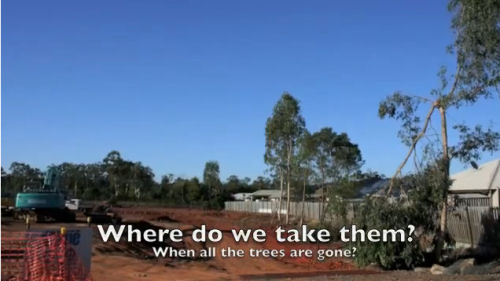
 The media is so full of the ghastly propaganda for population growth by our government, its ministers and the same old academics who play to big business, that we thought we would bring you some exerpts from The World Today, but edited to highlight the anti-growth lobby's contribution. Enjoy.
The media is so full of the ghastly propaganda for population growth by our government, its ministers and the same old academics who play to big business, that we thought we would bring you some exerpts from The World Today, but edited to highlight the anti-growth lobby's contribution. Enjoy. 
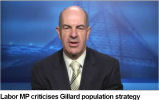

 The government has ignored the environmental submission to the sustainable population strategy public consultation, (led by Terry Burke MP), says former senator Sandra Kanck, who is president of Sustainable Population Australia.
The government has ignored the environmental submission to the sustainable population strategy public consultation, (led by Terry Burke MP), says former senator Sandra Kanck, who is president of Sustainable Population Australia.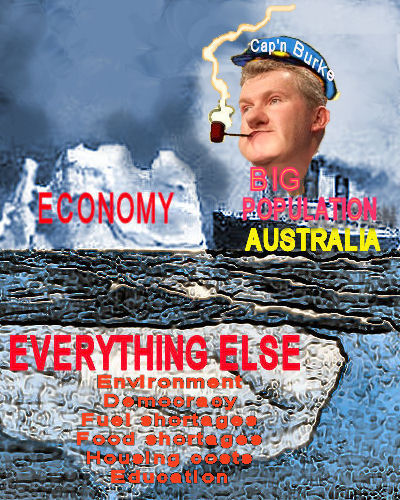 The results of the Government’s
The results of the Government’s 

 "World opinion" has accepted an act of overt military aggression against Libya, a sovereign country guilty of no violation of the UN Charter, in an act of de facto neo-colonialism, a 'humanitarian' war in violation of basic precepts of the laws of nations. Much of the credit for so moulding international public opinion can be claimed by
"World opinion" has accepted an act of overt military aggression against Libya, a sovereign country guilty of no violation of the UN Charter, in an act of de facto neo-colonialism, a 'humanitarian' war in violation of basic precepts of the laws of nations. Much of the credit for so moulding international public opinion can be claimed by 
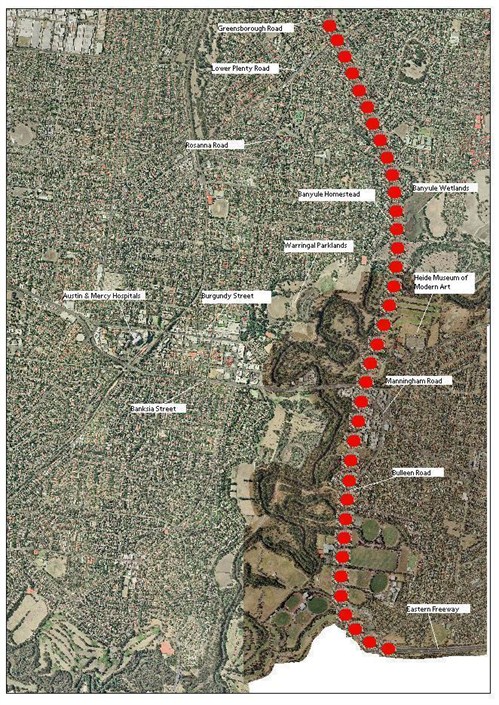

 Senator Joyce should comment on the impact of landscape-scale bulldozing of native ground cover and natural land features during the construction of cotton farms and other broad-acre irrigation enterprises, when he calls for damming of the Balonne River in Queensland, in response to the St George floods.
Senator Joyce should comment on the impact of landscape-scale bulldozing of native ground cover and natural land features during the construction of cotton farms and other broad-acre irrigation enterprises, when he calls for damming of the Balonne River in Queensland, in response to the St George floods. The continuing campaign, by Federal Opposition Senator Barnaby Joyce, to dam the Balonne River, ostensibly to mitigate the impact of flooding around St George, has been criticised by environmental and public water-rights advocacy group, Fair Water Use (Australia).
The continuing campaign, by Federal Opposition Senator Barnaby Joyce, to dam the Balonne River, ostensibly to mitigate the impact of flooding around St George, has been criticised by environmental and public water-rights advocacy group, Fair Water Use (Australia).
 PLEASE make a brief Submission urgently. Under the heading of Competition and Efficiency, economists easily dispense with democratic objections and humane values. Only the strictly illegal is out, and authorities are always willing to change the law if money is involved. The campaign to slaughter kangaroos for their meat in Victoria has been building over the years, despite its unsustainability and the distress it produces in kangaroos and the many people who love this species. The Department of Sustainability has shown itself to utterly lack science or responsibility in monitoring and protecting our native wildlife. More often than not it awards permits to kill kangaroos without checking their justifications. The Auditor General's report in 2009 showed that the Victorian government did not know what it was doing with regard to wildlife. It would therefore be a serious error to change laws to reward kangaroo killing and to make it easier.
PLEASE make a brief Submission urgently. Under the heading of Competition and Efficiency, economists easily dispense with democratic objections and humane values. Only the strictly illegal is out, and authorities are always willing to change the law if money is involved. The campaign to slaughter kangaroos for their meat in Victoria has been building over the years, despite its unsustainability and the distress it produces in kangaroos and the many people who love this species. The Department of Sustainability has shown itself to utterly lack science or responsibility in monitoring and protecting our native wildlife. More often than not it awards permits to kill kangaroos without checking their justifications. The Auditor General's report in 2009 showed that the Victorian government did not know what it was doing with regard to wildlife. It would therefore be a serious error to change laws to reward kangaroo killing and to make it easier.
 Burial at sea?
Burial at sea?


 Author and Chiari Syndrome sufferer, Rahael D'Alonzo, has written a fascinating personal account and investigation of this obscure, chameleon and pervasive syndrome, which often requires neurosurgery and may be life-threatening. His style is direct, his observations detailed and scientific, his accounts of human mismanagement of his diagnosis and treatment revealing but fair. His perspective is both useful and unusual because of his own background as a pharmaceutical research scientist and his strong personality and physical stamina. He has a sophisticated understanding of the United States health insurance industry.
Author and Chiari Syndrome sufferer, Rahael D'Alonzo, has written a fascinating personal account and investigation of this obscure, chameleon and pervasive syndrome, which often requires neurosurgery and may be life-threatening. His style is direct, his observations detailed and scientific, his accounts of human mismanagement of his diagnosis and treatment revealing but fair. His perspective is both useful and unusual because of his own background as a pharmaceutical research scientist and his strong personality and physical stamina. He has a sophisticated understanding of the United States health insurance industry.
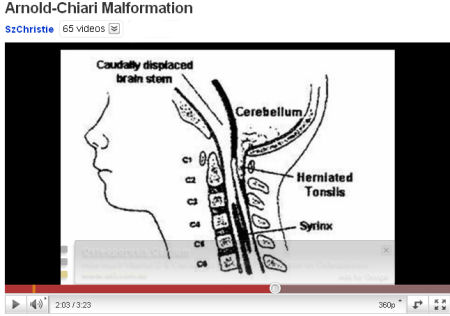
 Wildlife carers always advocate 'euthanasia' for adult kangaroos on the grounds that they cannot be rehabilitated. Since kangaroos suffer and die from stress myopathy, containing them in an area and exposing them to humans (arch enemy of kangaroos) is cruel and prolongs their suffering - it is argued.
Wildlife carers always advocate 'euthanasia' for adult kangaroos on the grounds that they cannot be rehabilitated. Since kangaroos suffer and die from stress myopathy, containing them in an area and exposing them to humans (arch enemy of kangaroos) is cruel and prolongs their suffering - it is argued.



 Volunteer opportunity in Beijing China to administer China Small Animals Protection Agency. This animal organization, the first of its kind in China, is run by Professor Lu Di who is in her 80's and still working some 10 to 15 hours daily to take care of those animals. The group just took in 520 dogs in an amazing rescue mission where Chinese police were persuaded to help retrieve stolen pets from the restaurant trade. Video-link inside with incredible and heartwarming footage!
Volunteer opportunity in Beijing China to administer China Small Animals Protection Agency. This animal organization, the first of its kind in China, is run by Professor Lu Di who is in her 80's and still working some 10 to 15 hours daily to take care of those animals. The group just took in 520 dogs in an amazing rescue mission where Chinese police were persuaded to help retrieve stolen pets from the restaurant trade. Video-link inside with incredible and heartwarming footage!


 wonderful video about Prof Lu Di and her work
wonderful video about Prof Lu Di and her work In Murraylands, South Australia, floods have trapped wombats in their warrens for weeks. Wildlife rescuers have been rescuing them and, as they rescue them, the rescued animals have been digging their friends and relatives out alongside the human rescuers.
In Murraylands, South Australia, floods have trapped wombats in their warrens for weeks. Wildlife rescuers have been rescuing them and, as they rescue them, the rescued animals have been digging their friends and relatives out alongside the human rescuers.
 The Age is a constant source of propaganda for population growth in Melbourne. Jake Niall's article today is another flagrant example. Melbournians need strong minds and hearts to fight back against their runaway parliaments and reclaim their natural rights to self-government.
The Age is a constant source of propaganda for population growth in Melbourne. Jake Niall's article today is another flagrant example. Melbournians need strong minds and hearts to fight back against their runaway parliaments and reclaim their natural rights to self-government. 
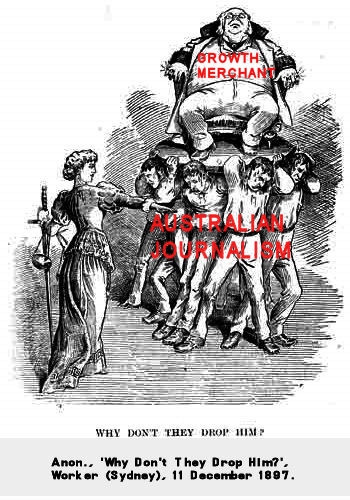 Age Sports-writer Jake Niall promotes the thinnest of arguments for overpopulating Melbourne as if they had real authority, on behalf of The Age, Melbourne's newspaper for the middle classes. The Age owns a massive international property dot com and represents a moneyed power-elite that relies on overpopulating Melbourne against residents' and electors' wishes and all commonsense. Its role seems to be to suppress protest through the massive weight of continuous propaganda, whilst maintaining a thin pretence of counterbalance by publishing mildly dissenting letters to the editor from time to time.
Age Sports-writer Jake Niall promotes the thinnest of arguments for overpopulating Melbourne as if they had real authority, on behalf of The Age, Melbourne's newspaper for the middle classes. The Age owns a massive international property dot com and represents a moneyed power-elite that relies on overpopulating Melbourne against residents' and electors' wishes and all commonsense. Its role seems to be to suppress protest through the massive weight of continuous propaganda, whilst maintaining a thin pretence of counterbalance by publishing mildly dissenting letters to the editor from time to time. Boroondara Council has proposed development of 48 “Neighbourhood Activity Centres” (NAC’s) over, on and around strip shopping centres or villages throughout the municipality of Boroondara. This is a fatally flawed policy having been developed before the last election and is based on the Brumby Government’s Housing Capacity Strategy under which each metropolitan Council was given a target population figure to accommodate. The new Coalition Government has renounced this policy and has scrapped the Brumby blueprints - Melbourne 2030 and Melbourne @ 5 million. Boroondara Council is proceeding regardless.
Boroondara Council has proposed development of 48 “Neighbourhood Activity Centres” (NAC’s) over, on and around strip shopping centres or villages throughout the municipality of Boroondara. This is a fatally flawed policy having been developed before the last election and is based on the Brumby Government’s Housing Capacity Strategy under which each metropolitan Council was given a target population figure to accommodate. The new Coalition Government has renounced this policy and has scrapped the Brumby blueprints - Melbourne 2030 and Melbourne @ 5 million. Boroondara Council is proceeding regardless.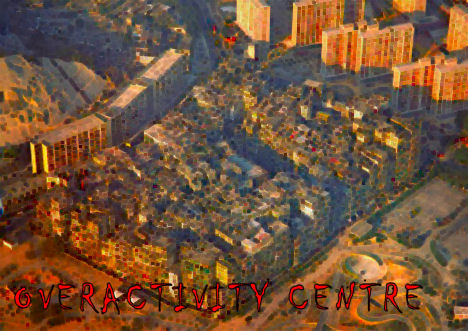
 Approval to rezone the rural land opposite Serendip Sanctuary, Lara, near Geelong, sets a dangerous precedent for open slather development that places the wildlife protected there at risk and flies in the face of democracy. The Sanctuary is internationally recognised for successfully breeding captive species such as Brolga, Musk and Freckled Duck and now the Eastern Barred Bandicoot, which is on the brink of extinction. Serendip forms an important wildlife corridor between the You Yangs Regional Park and Brisbane National Park through agricultural land and the sprawl of Greater Melbourne as it spreads to meet the regional city of Geelong.
Approval to rezone the rural land opposite Serendip Sanctuary, Lara, near Geelong, sets a dangerous precedent for open slather development that places the wildlife protected there at risk and flies in the face of democracy. The Sanctuary is internationally recognised for successfully breeding captive species such as Brolga, Musk and Freckled Duck and now the Eastern Barred Bandicoot, which is on the brink of extinction. Serendip forms an important wildlife corridor between the You Yangs Regional Park and Brisbane National Park through agricultural land and the sprawl of Greater Melbourne as it spreads to meet the regional city of Geelong.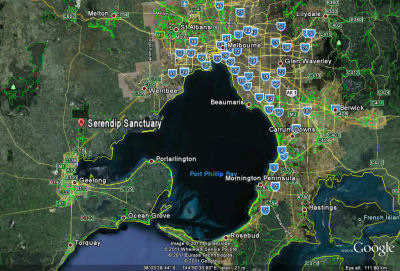 Why do Victorians and other Australians have to keep fighting over and over again to protect their rights from the very people who are supposed to be looking after their rights?
Why do Victorians and other Australians have to keep fighting over and over again to protect their rights from the very people who are supposed to be looking after their rights?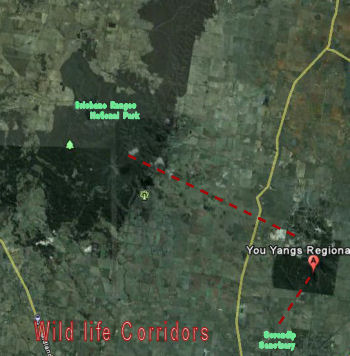 The Serendip corridor ultimately leads, via the You Yangs Regional Park to the Brisbane Ranges National Park, which is a haven for koalas, which are daily losing their habitat to the unprecedented amount of development in Victoria and other states.
The Serendip corridor ultimately leads, via the You Yangs Regional Park to the Brisbane Ranges National Park, which is a haven for koalas, which are daily losing their habitat to the unprecedented amount of development in Victoria and other states.  Serendip Sanctuary is just 45 minutes to the west of Melbourne but visitors will find that they are immediately amongst wild kangaroos and native birds, such as the animated honeyeaters and screeching cockatoos. The lake is the home of crowds of waterbirds. These waterbirds include the magnificent brolgas, celebrated in Aboriginal dance, now rarely seen by Australians.
Serendip Sanctuary is just 45 minutes to the west of Melbourne but visitors will find that they are immediately amongst wild kangaroos and native birds, such as the animated honeyeaters and screeching cockatoos. The lake is the home of crowds of waterbirds. These waterbirds include the magnificent brolgas, celebrated in Aboriginal dance, now rarely seen by Australians.  This article explores why Australians are so frustrated with the lack of deep thinkers and serious policy makers in our political establishment. It asks why politicians only discuss peripheral issues and never seriously address homelessness. It comments on some recent flagrantly anti-democratic political acts, including the way LNP leadership has been hired out to Cambell Newman in Queensland. In the spirit of relocalisation, it offers some insights into local power in China.
This article explores why Australians are so frustrated with the lack of deep thinkers and serious policy makers in our political establishment. It asks why politicians only discuss peripheral issues and never seriously address homelessness. It comments on some recent flagrantly anti-democratic political acts, including the way LNP leadership has been hired out to Cambell Newman in Queensland. In the spirit of relocalisation, it offers some insights into local power in China. One only need browse through recent events in Australian politics (Federal and State) over the last few months to understand why Australians are so frustrated with the lack of deep thinkers and serious policy makers in our political establishment.
One only need browse through recent events in Australian politics (Federal and State) over the last few months to understand why Australians are so frustrated with the lack of deep thinkers and serious policy makers in our political establishment.
 In the TV debate of April 12, 2011, the leaders of Canada's four parties with parliamentary seats demonstrated that beneath the phony left-right dichotomies, parliament is ideologically monolithic in the most important sense. All of them believe in the necessity, desirability and possibility of continuing economic growth, and that immigration-driven population growth is its necessary concomitant and driver. But how could it be otherwise? Politicians do not effect change, they respond to it. And the environmental movement---and its political arm in the NDP and the Green Party, has done nothing to create a constituency of awareness that population growth in Canada is unsustainable, an awareness that if widely shared, would compel political parties and their leaders to address it. Most culpable is David Suzuki, who could move mountains if he would publicly say what he has said of Australia: that in relation to our resources, we are in serious population overshoot.
In the TV debate of April 12, 2011, the leaders of Canada's four parties with parliamentary seats demonstrated that beneath the phony left-right dichotomies, parliament is ideologically monolithic in the most important sense. All of them believe in the necessity, desirability and possibility of continuing economic growth, and that immigration-driven population growth is its necessary concomitant and driver. But how could it be otherwise? Politicians do not effect change, they respond to it. And the environmental movement---and its political arm in the NDP and the Green Party, has done nothing to create a constituency of awareness that population growth in Canada is unsustainable, an awareness that if widely shared, would compel political parties and their leaders to address it. Most culpable is David Suzuki, who could move mountains if he would publicly say what he has said of Australia: that in relation to our resources, we are in serious population overshoot. 


 The Canadian federal election cries out for an alternative to BAU growthism. It cries out for a party which would present a coherent and distinctive alternative to the system of economic growth. Canadians need a place on the ballot where they can mark an "X" beside "no more growth". In fact they need an opportunity for vote for "de-growth". But the Green Party of Canada is not providing them with that opportunity or alternative. Instead, what they are providing is meaningless rhetoric and platitudes. Shall we lend credence to their approach by voting for them? Shall we allow them to say that they have our support for their direction? Shall we allow them to say, after receiving our vote, that they have a mandate to push for hyper immigration and a foreign aid policy that would continue to promote global overpopulation? I say no. I say that casting a vote can sometimes be worse than spoiling a ballot. There are many things one can do to promote change that voting in a sham election. Writing, petitioning, demonstrating and educating the grassroots come to mind.
The Canadian federal election cries out for an alternative to BAU growthism. It cries out for a party which would present a coherent and distinctive alternative to the system of economic growth. Canadians need a place on the ballot where they can mark an "X" beside "no more growth". In fact they need an opportunity for vote for "de-growth". But the Green Party of Canada is not providing them with that opportunity or alternative. Instead, what they are providing is meaningless rhetoric and platitudes. Shall we lend credence to their approach by voting for them? Shall we allow them to say that they have our support for their direction? Shall we allow them to say, after receiving our vote, that they have a mandate to push for hyper immigration and a foreign aid policy that would continue to promote global overpopulation? I say no. I say that casting a vote can sometimes be worse than spoiling a ballot. There are many things one can do to promote change that voting in a sham election. Writing, petitioning, demonstrating and educating the grassroots come to mind. The Canadian federal election is upon us and the Green Party claims to offer a "significantly different approach to governance" (see below). Really? Let's take a look:
The Canadian federal election is upon us and the Green Party claims to offer a "significantly different approach to governance" (see below). Really? Let's take a look: France is about to debate a law to totally ban fracking for gas. Australia has allowed the practice with problems quickly developing. Mexico has no defenses. The United States is deeply affected. "Fracking" was developed by Halliburton, the second largest oilfield services corporation in the world. The term comes from the extraction method of hydraulic fracturing of shale beds to access "unconventional gas" i.e. gas that comes out of wells other than classic oil-wells. Under President Bush, the fracking industry was exempted from environmental laws, including clean water protection. As many of us have come to understand, when you take away environmental protection, you take away almost all human rights to object to big business, even if citizens lives are obviously threatened. We also mention the Australian film made by Four Corners investigating the impacts of the industry in Australia.
France is about to debate a law to totally ban fracking for gas. Australia has allowed the practice with problems quickly developing. Mexico has no defenses. The United States is deeply affected. "Fracking" was developed by Halliburton, the second largest oilfield services corporation in the world. The term comes from the extraction method of hydraulic fracturing of shale beds to access "unconventional gas" i.e. gas that comes out of wells other than classic oil-wells. Under President Bush, the fracking industry was exempted from environmental laws, including clean water protection. As many of us have come to understand, when you take away environmental protection, you take away almost all human rights to object to big business, even if citizens lives are obviously threatened. We also mention the Australian film made by Four Corners investigating the impacts of the industry in Australia. 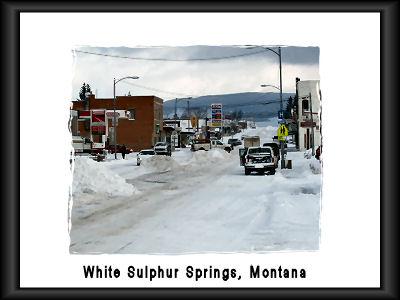
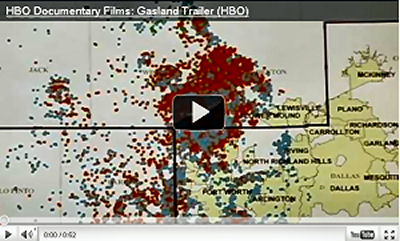
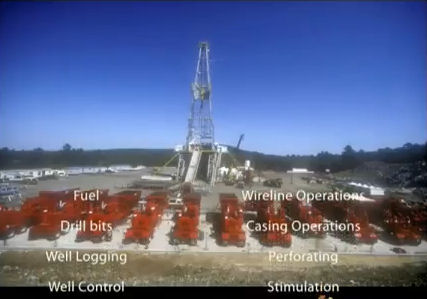 Click here to see a movie which the industry has made in response to the film.
Click here to see a movie which the industry has made in response to the film.









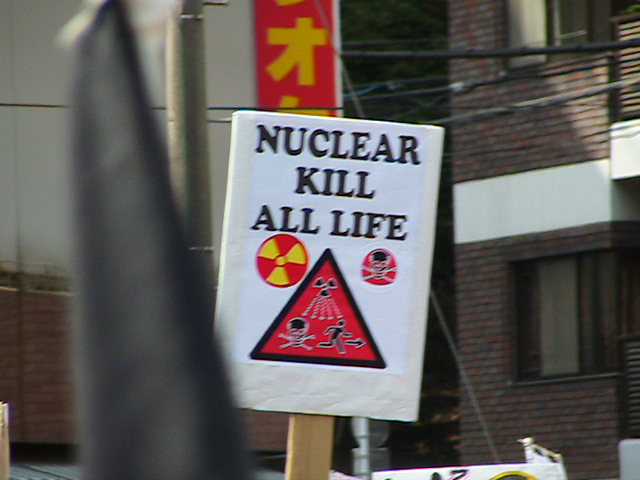
















 See inside for terms of reference and contact details. We also cite some of a contribution from the Property Council of Australia, which urges the government not to put koalas profits and lets them know that it will try to get laws to compensate landowners if development is hampered by koala protection. The council is big on relocation and would probably expect any actions to save the koala to be delayed pending better counting.
See inside for terms of reference and contact details. We also cite some of a contribution from the Property Council of Australia, which urges the government not to put koalas profits and lets them know that it will try to get laws to compensate landowners if development is hampered by koala protection. The council is big on relocation and would probably expect any actions to save the koala to be delayed pending better counting. 
 Nick Xenophon has initiated a parliamentary inquiry with very wide terms which should reveal any relationships between the Queensland Government and Queensland insurance terms for people affected by floods in that State. Since the Queensland Government has been responsible for the planning that has led to building on known floodplains, I would hope that the inquiry will receive and make public any documents revealing how the Government and insurers dealt with these risks in advance. The Inquiry asks for documentation going back to 2000.
Nick Xenophon has initiated a parliamentary inquiry with very wide terms which should reveal any relationships between the Queensland Government and Queensland insurance terms for people affected by floods in that State. Since the Queensland Government has been responsible for the planning that has led to building on known floodplains, I would hope that the inquiry will receive and make public any documents revealing how the Government and insurers dealt with these risks in advance. The Inquiry asks for documentation going back to 2000. Big capitalism and the population growth lobby force people to live in dangerously risky conditions which by tradition they used to avoid. Only by returning power to the citizens via local and regional governments can we stop the population growth and the constant increase in accidents, corruption and diminished quality of life. To return power to local citizens, we need better laws to stop media ownership residing in so very few hands and being allowed to be the default 'information' conduite for government and the principle means of publicising candidates for election.
Big capitalism and the population growth lobby force people to live in dangerously risky conditions which by tradition they used to avoid. Only by returning power to the citizens via local and regional governments can we stop the population growth and the constant increase in accidents, corruption and diminished quality of life. To return power to local citizens, we need better laws to stop media ownership residing in so very few hands and being allowed to be the default 'information' conduite for government and the principle means of publicising candidates for election.
Recent comments